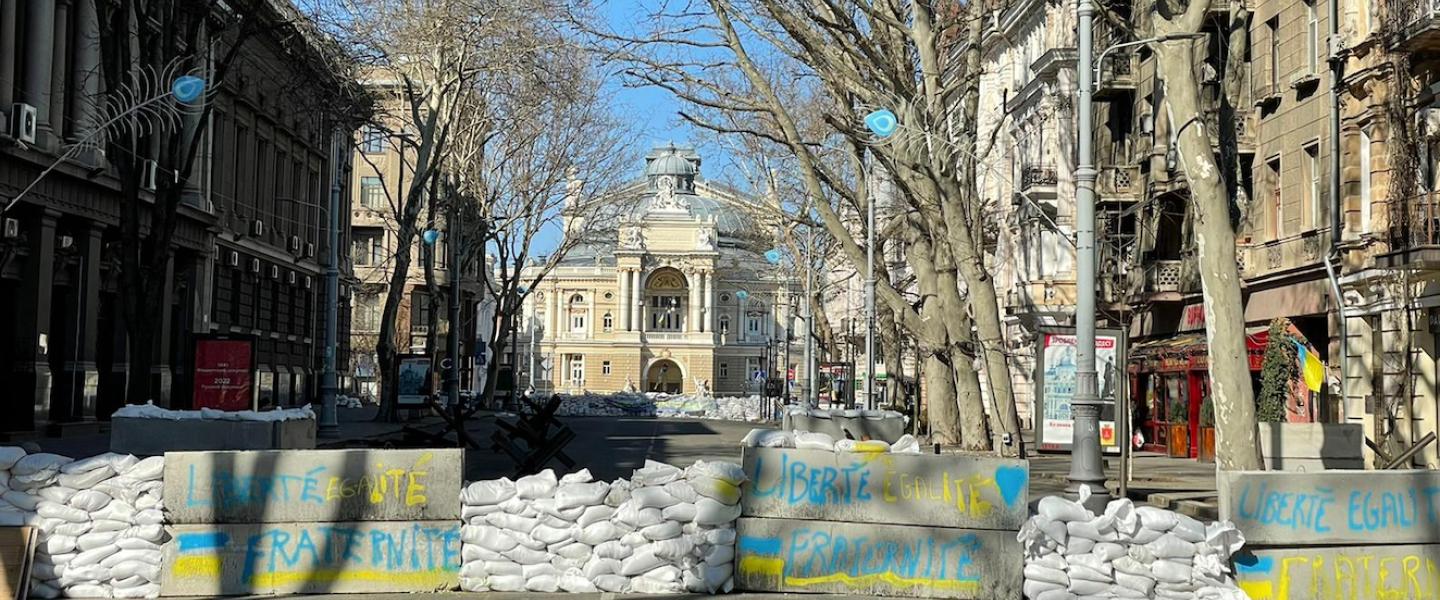“There are some crew who are suffering with shortages of provisions and the fear that they will not get home to see their families.”
Outside Odesa port we met with a local ship manager in a public area for what otherwise seemed to be a normal day for coffee with colleagues as the spring weather provided a chilly but bright backdrop. Blue skies reflected against rust-coloured tank obstacles, and the many citizen-made camouflage nets draped over defensive concrete and white sandbagged positions in the historic streets.
Our contact’s phone held a current list of all vessels alongside Odesa port or were otherwise stopped from sailing from the other Ukrainian ports or from within territorial waters. At sea, some had been fired upon by Russian vessels, damaged and crew killed, while others remained trapped in the Sea of Azov and along the Black Sea coast.
Together, we counted over 100 vessels affected registered with multiple flag states. When asked about remaining crew numbers he estimated about 1500 seafarers are currently trapped by the current invasion.
He then handed us his phone to speak to a Chief Officer onboard one of the vessels in the port close by.
Their testimony highlighted serious concerns about multiple issues. These ranged from a lack of stores, potable water, bunkers, and cold vessels which have been reactivated only to have pipes burst and crew accommodation flooded compounding onboard misery. Engines were reportedly started for two hours a day to provide heating and hot water, but otherwise the vessels became freezing with the outside temperatures falling below zero centigrade.
Some crews had been working 20-hour days to keep the vessels poised ready to move, while concurrently ensuring that cargos were protected. The level of professionalism and selflessness shown was a mark of their pride mixed with courage, and a wish to get the job done.
It was also clear that pressure to maintain the readiness of some vessels was an overriding priority being placed on some crews. Questions were fairly raised about owners actual understanding of the context and conditions they were now facing.
The issue of the change over of crews and safe exit corridors was discussed with a lack of change a major factor of concern. Many seafarers just wanted to go home but the security situation simply prevented it.
We asked about general safety and security at his location. He was complimentary of the safety within the Odesa port area and the reassuring presence of Ukrainian navy personnel. Some vessels apparently had their own security teams which we were informed were comprised of Ukrainian private security personnel.
The recent air attacks which Ukrainian air defence batteries effectively repulsed saw one of the downed Russian jets land 150m from his vessel, nonetheless, he and his crew felt as safe as they could be under the current circumstances. It’s hard to know if this is the so-called boiling frog syndrome, or a genuine optimistic outlook that hostilities would soon be over.
Fears of indiscriminate bombardment from the sea, of Russian amphibious landings, of running out of provisions, of being left behind, and of an extension of the duration of the war increasing the threat to life featured high in our discussion. It remained obvious that no-one knew when or if conditions would improve, or degrade further.
Our team found seafarers and those who intimately support them trying to operate as near to normality as possible in what are undoubtedly abnormal circumstances.
Courage, however, was not in short supply.
ENDS
